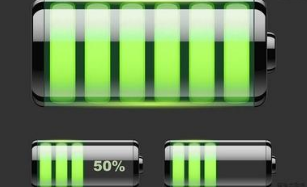Most electric vehicles equipped with lithium-ion batteries are designed to limit the full use of their battery capacity. A certain amount of energy is always reserved as a buffer to protect the battery and extend its lifespan. This is commonly seen in the specifications, where you might notice something like "60kwh (55kwh available)" or similar notations.
If you pay close attention, you'll realize that no electric vehicle using lithium batteries allows full utilization of the battery’s total capacity. Instead, a small reserve is kept at all times for safety and performance reasons. This practice is standard across the industry and is often highlighted in the technical details provided by manufacturers.

In reality, there are three main reasons behind this limitation. First, the cycle life of a lithium battery increases significantly as the depth of discharge (DoD) decreases. At deeper discharge levels, the battery experiences more stress, making it harder to maintain longevity without advanced control systems that are still evolving.
For example, the Winston Battery 100 Ah LFP specification shows that at 80% DoD, the battery can last around 5,000 cycles, but at 70% DoD, it can reach up to 7,000 cycles. This clearly demonstrates how reducing the depth of discharge helps preserve battery health over time.
Second, as the battery's state of charge decreases, its internal resistance tends to increase. When discharging deeply, the increased resistance causes more energy to be lost as heat, especially when the current remains constant. This inefficiency can affect both performance and overall battery health.
Third, lithium batteries have a relatively flat discharge curve under normal conditions. However, when discharged deeply, this curve becomes steeper, making it harder for users to predict remaining range accurately. By limiting the depth of discharge, manufacturers ensure a more consistent and predictable driving experience for consumers.
It's also important to note that limiting the depth of discharge is different from battery "upgrades" or "liberation." For instance, Tesla Model S owners with 60 kWh or 70 kWh batteries can sometimes unlock additional capacity through software updates, increasing the usable energy to 75 kWh. Even after such an upgrade, the battery still maintains a buffer for safety and longevity.
So, the question remains: does a 60 kWh battery that hasn’t been upgraded last longer than one that has? While the answer isn't straightforward, it’s clear that the design choices made by manufacturers aim to balance performance, safety, and long-term reliability.
VFL Fiber Identifier,Fiber Identifier with power meter,Single Mode Optical Fiber Identifiers,Multimode Optical Fiber Identifiers
Shenzhen Runtop Technology Co.LTD , https://www.runtoptech.com